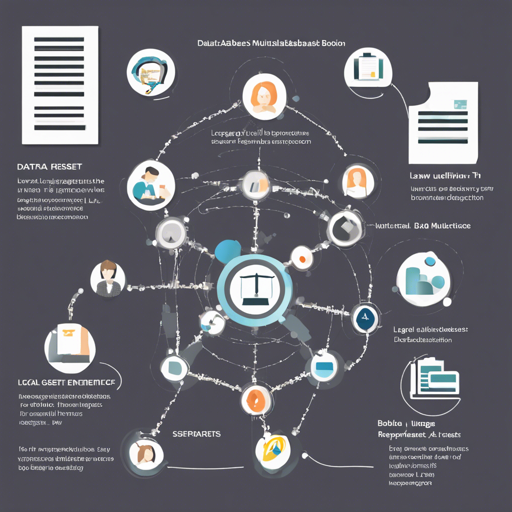The realm of Natural Language Processing (NLP) is vast and intricate, akin to navigating a dense forest filled with diverse plant species. One of the essential components of NLP is Sentence Boundary Detection (SBD)—the task of identifying where one sentence ends and another begins. This becomes particularly challenging within the legal domain due to complex sentence structures. In this blog post, we will delve into the nuances of the MultiLegalSBD dataset and how you can utilize it effectively for your own projects.
What is the MultiLegalSBD Dataset?
Curated by Tobias Brugger, Matthias Sturmer, and Joel Niklaus, the MultiLegalSBD dataset serves as a multilingual resource specifically designed for Sentence Boundary Detection in legal texts. With over 130,000 annotated sentences in six different languages, this dataset is a treasure trove for researchers and developers engaged in legal document analysis. The dataset aims to address the shortcomings of existing SBD models that struggle with multilingual data, particularly in legal contexts.
Why is Sentence Boundary Detection Important?
Think of SBD as a highway system for your text data. Without well-defined lanes (sentence boundaries), the traffic of information can become chaotic, leading to misinterpretations and errors in downstream tasks, such as sentiment analysis or information extraction. This is especially critical in the legal field, where precision is paramount.
How to Use the MultiLegalSBD Dataset
- Step 1: Access the Dataset
You can access the MultiLegalSBD dataset along with training and testing models publicly. Utilize this link to get your hands on the resources.
- Step 2: Understand Your Models
Familiarize yourself with various models you can train and test using this dataset, including:
- Conditional Random Fields (CRF)
- Bi-directional LSTM with CRF
- Transformers
- Step 3: Experimentation
Conduct experiments to evaluate performance using different algorithms on the multilingual data.
- Step 4: Benchmarking
Compare your findings against the state-of-the-art results provided in the study. Note how existing models perform in a zero-shot setting on specific language test sets, notably Portuguese.
Troubleshooting Tips
- Dataset Access Issues:
If you encounter challenges in accessing the dataset, ensure that your internet connection is stable and try refreshing the page.
- Model Performance:
If your model does not perform as well as expected, consider revisiting your data preprocessing steps or experimenting with different hyperparameters.
- Understanding Results:
In case your results seem unclear, analyze the outputs and refine your interpretations based on the performance metrics mentioned in the research.
For more insights, updates, or to collaborate on AI development projects, stay connected with fxis.ai.
Conclusion
Utilizing the MultiLegalSBD dataset can significantly enhance your Sentence Boundary Detection tasks, particularly in a multilingual and legal context. It is an excellent resource for anyone focused on advancing the field of NLP. At fxis.ai, we believe that such advancements are crucial for the future of AI, as they enable more comprehensive and effective solutions. Our team is continually exploring new methodologies to push the envelope in artificial intelligence, ensuring that our clients benefit from the latest technological innovations.

